Dramatic limestone outcrops, white sands and pellucid waters are, for many visitors, among the many well-loved attractions of Thailand’s islands and beaches. Very few, however, have any knowledge of aahaan pak tai, the south’s distinctive cuisine, arguably the kingdom’s most dynamic style of cooking.
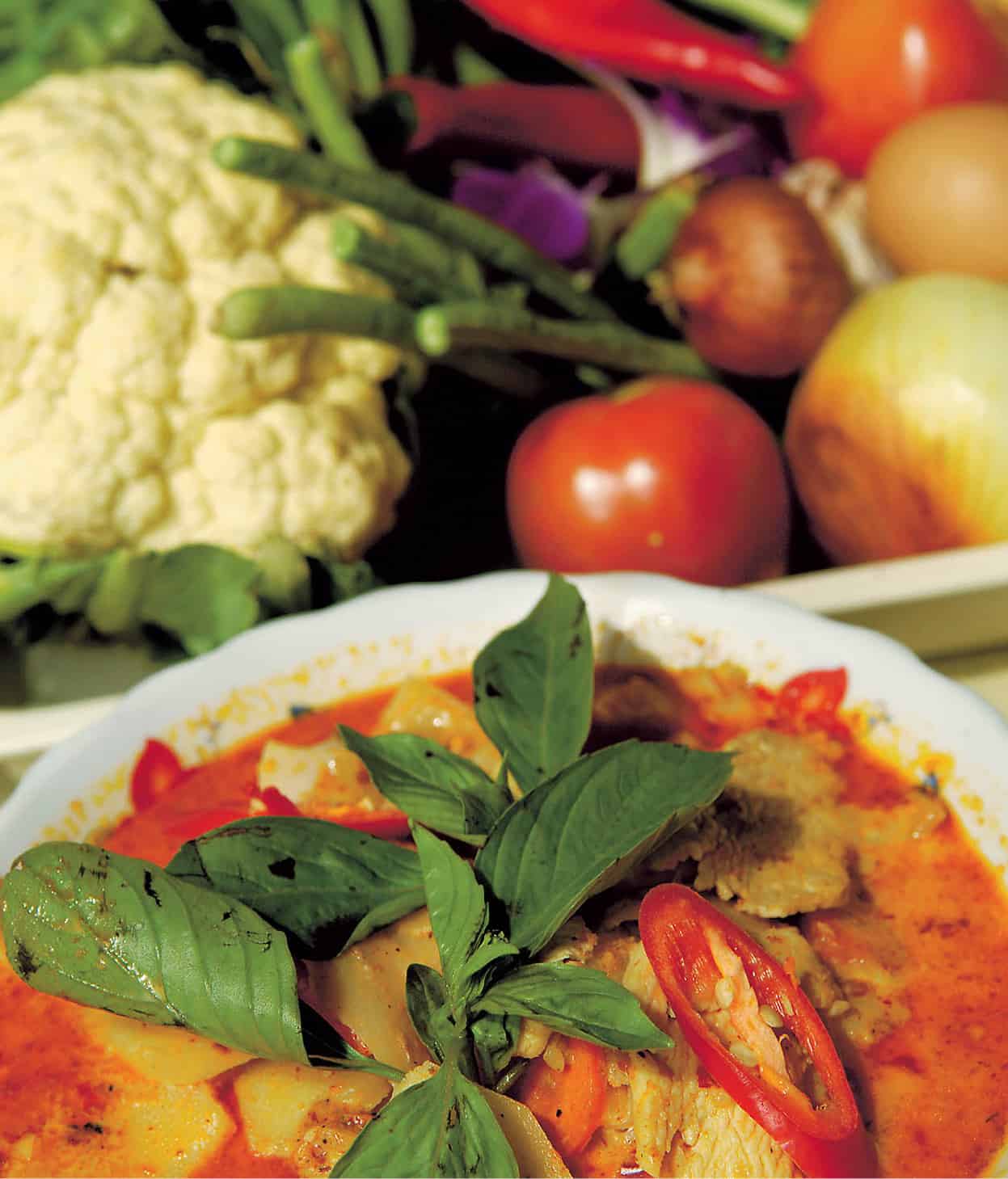
A spicy red curry and its many ingredients.
John W. Ishii/Apa Publications
Even though the influence of cookbooks, international restaurants and travel shows (not to mention the Thai government’s highly active efforts to promote the cuisine) has helped to assure Thai food a place among the world’s great cuisines, general awareness of Thailand’s culinary traditions has yet to reach the level enjoyed by countries such as Italy and France. While many foodies are aware of the distinct regional variations of Italian and French cooking, Thai cuisine is still often judged as a monotypic tradition, represented simplistically by a menu of dishes characteristic of Bangkok’s central cuisine.
Diverse influences
Of all the regional styles of cooking, southern Thailand’s bears all the hallmarks of substantial cross-cultural influence. History, trade, religion and empire are stirred into the mix. The great Srivijaya rulers of Indonesia and their long-reaching influence, the 8th-century pilgrims of Islam who arrived before the Thai polity coalesced, the presence of Portuguese envoys, and the influence of Chinese festivals all played a part in the evolution of southern Thai cuisine. The recurrent waves of trading that occurred from the 16th to 18th century contributed Persian spices such as cardamom and cumin. In much the same way, the Portuguese trading ships introduced ingredients from the New World, such as tomatoes, aubergines, cashews and chillies.
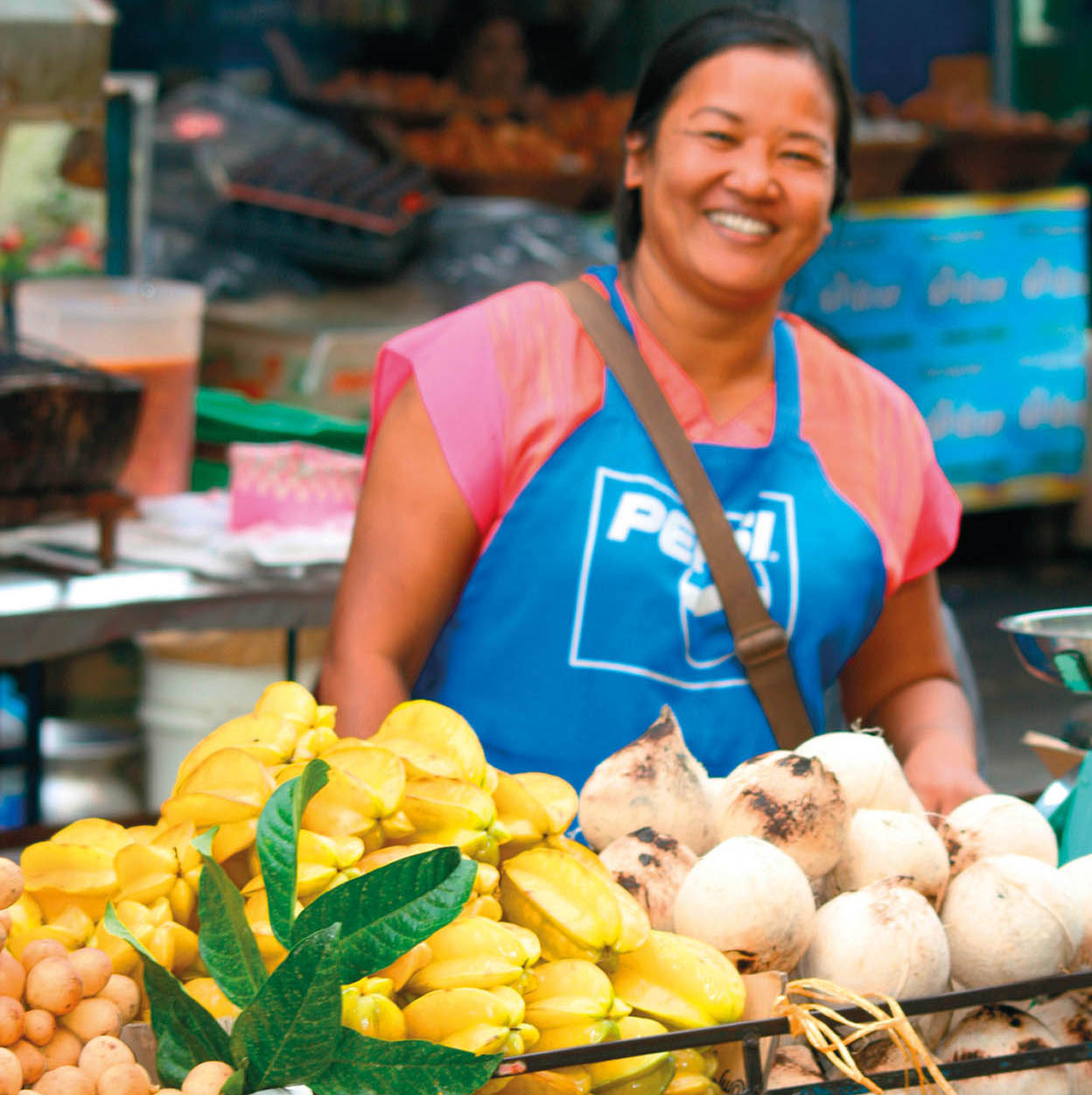
A Bangkok fruit stall.
Bigstock
Aromatic curries can be almost Indian in their rich palette of spices and vibrant colours, and indeed, much of the cuisine’s character was influenced by the Tamil and Keralan workers who have since migrated to neighbouring Malaysia. The Chinese, on the other hand, in places such as Phuket and Trang, brought their taste for coffee and dim sum with them.
Fierce and spicy flavours
So, what does southern Thai food taste like? Along with Isaan cooking of the northeast, it wields the most aggressive flavours of all Thai food. Indeed, visitors unaccustomed to it will immediately notice the fiery hot flavour that southerners are so fond of – rot phet, imparted by sharp hits of the numerous types of chilli used. But, like all Thai cuisine, this is balanced by sour, salty and sweet flavours. It is a richly woven meld of spices (which in some places can be so wide-ranging as to taste almost Persian) with a wondrous aroma hinting at its Indian influence, and pungent dashes of shrimp paste (a locally made speciality).
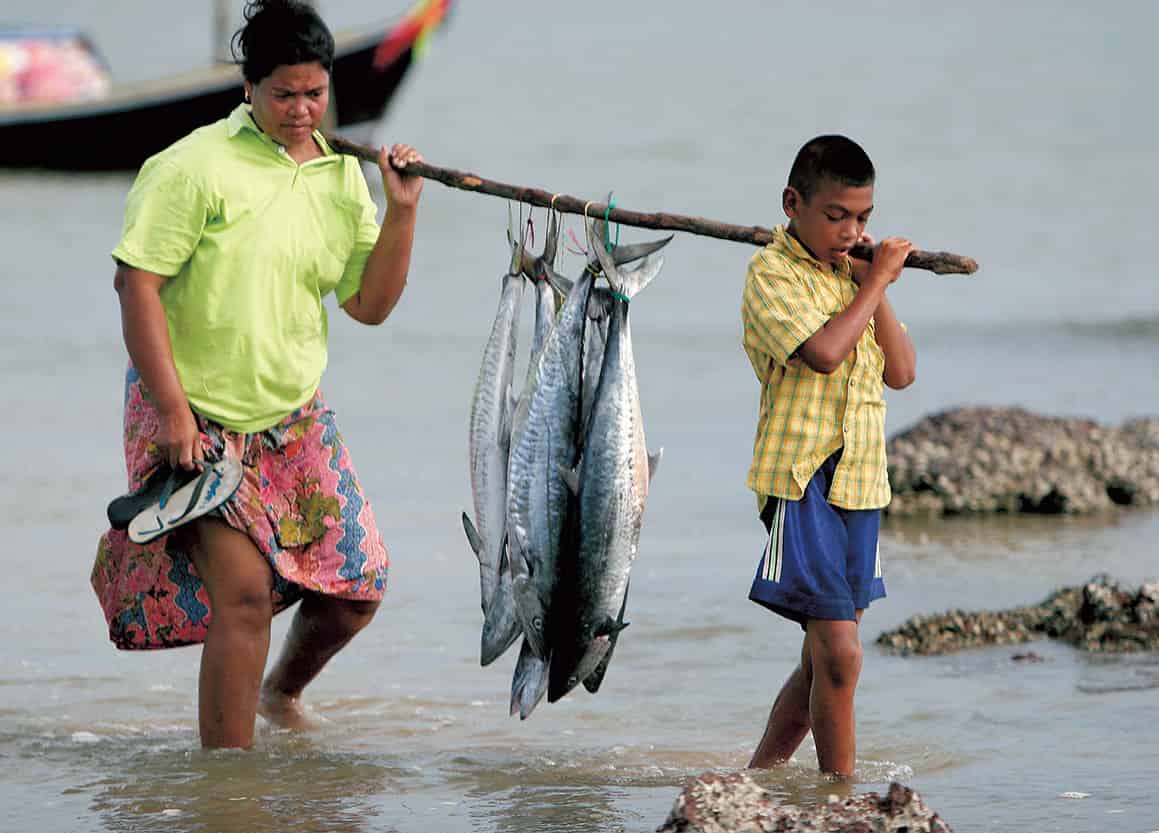
Fresh bounty from Thailand’s coastal waters.
Alamy
With technique at a premium, the artistry and complexity of preparation is almost jazz-like, with individual cooks improvising endlessly on old favourites, and occasionally yielding unlikely new combinations. The building blocks of flavour include masala-like curry blends, fermented vegetables and fish, various pickled bamboo shoots and greens, and an array of fruit that, like the versatile papaya, range from astringent when green and unripe to sugary sweet when ripened to maturity.
Chinese food in Trang town
Though only a 10-minute ride from the limestone mountains of the coast, the sleepy trading town of Trang has something more than natural beauty: it is a little-known stronghold of Chinese food culture in the south.
With a large population of second- and third-generation ethnic Chinese immigrants, the flavours here are Thai in influence, but also traditional enough to be heartily welcomed in China. Dim sum can be found on street corners in the morning, when blue-collar workers load up on noodles and tiny dumplings of shrimp, pork or crab. Come nightfall, the town’s vaunted barbecued pork – an unctuous and sweet creation permeated with just enough grill smoke to qualify it as a savoury – takes centre stage.
But the real draw here is black, heady and liquid. Trang, above all, is a coffee town. Shop owners of Hokkien Chinese descent roast their own beans and prepare coffee in a big, sock-like filter according to tradition. Every strip of houses has a coffee shop, so it is worth making the rounds. Some are rickety, the size of a pick-up truck, and made of clapboards. Others are near mini temples and always full of monks. Near the train station are several coffee shops where the cups of traditional thick, black brews are replaced by sugar-laced iced coffees and plates of sweet roti, loved by the youthful student clientele.
Bounteous ingredients
Natural bounty is a huge southern advantage. The Gulf of Thailand and the Andaman Sea harbour troves of white snapper, horse mackerel, marbled goby (soon hock), squid, prawns and rock lobster. And because the Isthmus of Kra, which separates these bodies of water, is so narrow, there is rarely a catch that does not end up, often within a day, in both Ko Samui (in the Gulf) and Ko Lanta (in the Andaman).
Whether in the markets that spring up by the light of dawn, or at roadside stands under neon lights come nightfall, fruit is piled high. Phuket has a luscious sweet pineapple with a taste that hints at vanilla, apricots and rose; it is so tender that even the core can be eaten dipped in sugar. The spiky, stinky durian (especially the kan yao variety) is most prolific in the deep-south province of Yala, while the cooling, purple-skinned mangosteen is excellent south of Nakhon Si Thammarat. Water greens, jungle ferns, ginger buds, snake beans, lemongrass, galangal shoots – there is an abundance of vegetables and herbs, too.
Pak kred, a dish of flower buds, ginger roots, bean pods, cashew leaves, and many other mysterious items, is a tangle worthy of a botanist. It helps cool the menacing spice of southern curries.
Of course, rice is still the staple. In the past, it sustained workers through the day with just small portions of chilli, curry or sauce added for flavour. Even now, rural Thais eat large helpings of rice with just morsels of dried or salted fish. Thankfully, long-grain jasmine-scented Thai rice is one of the most delicious to be found in Asia.
Representative dishes
The seafood of the south is so fresh that it warrants little fuss in preparation. The best of the catch, such as Phuket’s famed rock lobster or Trang’s soft-shell crab, is simply grilled or stir-fried with assertive seasonings such as lemongrass, black pepper and garlic. Squid is treated in the same way or, like many fish dishes, served with dipping sauces of chilli, lime and garlic. Deep-frying is a favourite, too, whether served in a sweet-sour Chinese style or in a very southern way with turmeric and garlic.
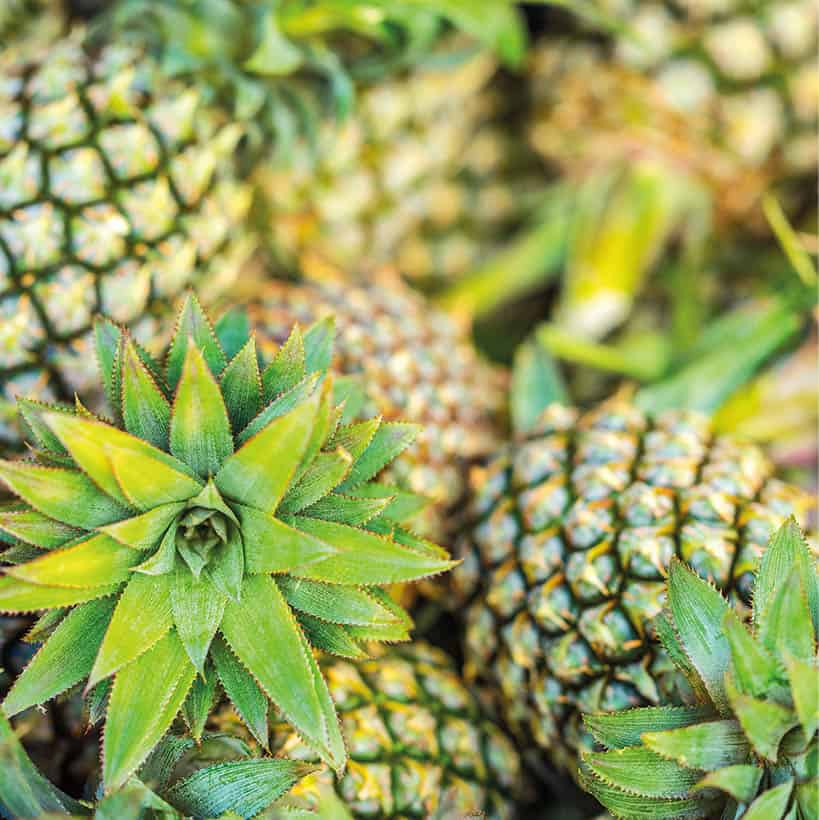
Pineapples grown on Phuket.
Shutterstock
The curries are fiercely spicy and leave their milder cousins of the central region looking a bit boring. One signature dish is kaeng leuang, a southern-style curry stained yellow-orange by turmeric and bristling with chillies, pickled bamboo shoots, shrimp paste, cucumber and syrupy-sweet pineapple. Another, kaeng tai pla, is a vicious stew of chillies, pickled bamboo shoots, fermented fish and black pepper that broadcasts its scent in all directions. A gentler speciality to try is khao yam, a seemingly innocuous salad of rice, vegetables, slivers of green mango, kaffir lime leaves, coconut flakes, dried shrimp and a strong fish sauce called budu. The flavour is floral and feminine, yet unmistakably southern in its lingering strength – all the more so if prepared with sataw, a large lima-bean lookalike with a pungent flavour and aroma.
Muslim cooking
The Muslim cookery of the south eschews pork, of course, but goat, beef and chicken more than make up for it, as evidenced in the Indian biryani-like rice dishes eaten here. The fragrant spices of cumin, cardamom, turmeric, as well as black and white pepper, are often at work, along with the different textures imparted by the use of yoghurt and ghee. Early morning and midday are the best times to find oxtail soup with torch ginger, shallots, chillies and coriander. Roti, the beloved Indian flatbread, is fun to watch being made, thanks to the often balletic slapping, pulling and whipping of the dough. It can be paired with a variety of curries and stuffed with egg or bananas according to preference. Roti stands live or die by the quality of their curries, and are a good place to try the distinctive spice-rich mussaman curry, sometimes thickened with pulverised nuts.
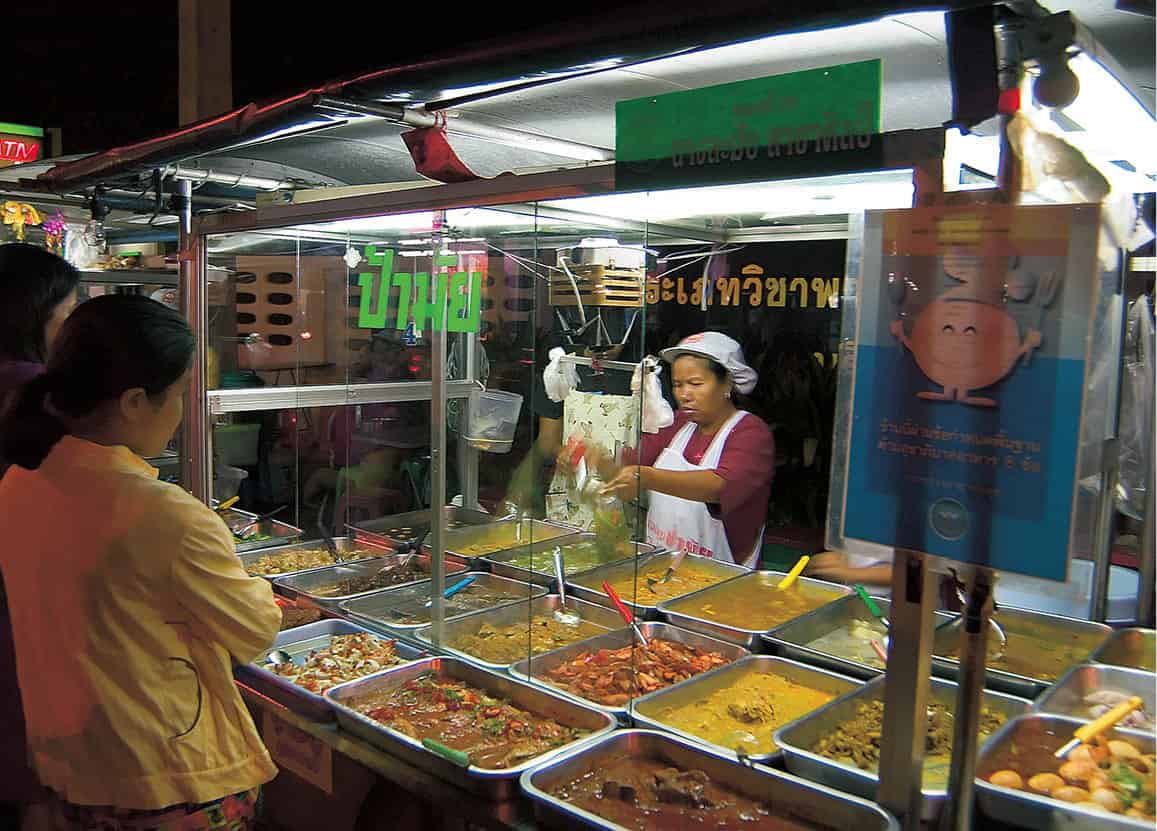
A food stall in Songkhla offering a wide selection of Thai curries.
John W. Ishii/Apa Publications
Localised variations
The south of Thailand is home to some of the most highly localised strains of regional cooking in the country. The flavours, the ingredients and the specialities vary with the town and whichever communities are dominant there. Locating any given speciality is as easy as locating where the people renowned for cooking it live.
A stronghold of culture and a regional centre in earlier times, the mid-peninsula hub of Nakhon Si Thammarat is renowned for its balanced but vigorously hot kaeng tai pla and stir-fries such as kaeng khua kling, a dry curry with bird’s-eye chillies, Thai aromatic ginger and garlic.
How to eat Thai food
Most Thai meals consist of several dishes placed in the centre of the table to be shared by all; the larger the group, the more dishes one can try. Except for dessert, there are no separate courses, as in a Western meal. Rather, the various dishes are enjoyed at the same time. Place a heap of rice on to your plate, together with small portions of various dishes at the side (it’s polite to take only a little at a time). Eat with a fork and spoon, using the fork in the left hand to push food on to the spoon. Chopsticks are only for Chinese and noodle dishes. In the far south, the traditional way of eating with the fingers is still practised by ethnic Malays.
The booming border city of Hat Yai is known for its night markets. Those in the know head straight for the fried chicken, crispy and redolent of lemongrass, shallots and garlic. Pattani and Yala boast old, wooden Islamic architecture and a hot and salty cooking style of their own. Songkhla has a fine seafood tradition, and the border outpost of Satun, a sleepy ocean hamlet, is where the curries combine the characteristics of Thai and Indo-Malay food. Meanwhile, Ranong is an unsung star for its Chinese-style coffee houses, not unlike Trang (for more information, click here).
Of course, another advantage of the culinary experience in southern Thailand is its stunning setting. A meal here is never too far from a picture-perfect beach.
Eating out in Bangkok
Bangkok has always been one of the world’s best places to eat. One could spend a month here slurping and spooning up the many varieties of food on offer.
Each of Thailand’s four regions has a distinct cuisine, and the beauty of dining in Bangkok is that they’re all available, from the sweet northern curry khao soy to the spicy Isaan classic somtam and pungent gaeng tai pla from the south. They’re often discovered at street stalls and markets serving the city’s migrant communities. Just head for the busiest spots and look for fresh produce and attention to food presentation – all indications of a good cook.
Whether tucked down the Old City alleys or nestled against the modern blocks of Sukhumvit, street food is everywhere – a legion of mango and durian sellers, roast-duck specialists and vendors wielding cleavers to hack off slices of crispy pork.
Of many seafood set-ups in Chinatown, a pair of the most famous battle it out on opposite corners of Soi Texas, both dealing in swimming-fresh squid, prawns and mussels, simply grilled or steamed, then slathered with sauces (naam jim) of garlic, herbs, lime juice, fish sauce and everything from fermented bean to tamarind juice.
Traditional flavours
Away from the street, Bangkok also sizzles. The long-time practice of Thai restaurants catering to tourist tastes is now challenged by a movement towards authentic traditional flavours epitomised by places like Bo.lan, Supanniga Eating Room and a branch of Nahm, in London, which was the world’s first Michelin-starred Thai restaurant. Another Michelin winner, Copenhagen’s Kiin Kiin, also has an outlet here, Sra Bua, serving modern inventions like red-curry ice cream.
Other well-represented Asian cuisines are Indian – including the excellent Gaggan, which uses molecular techniques – Japanese (check out Zuma) and Chinese, a huge influence on Thai dining, particularly in the ubiquitous lunchtime noodle dishes. Mei Jeang and China House in the Peninsula and Oriental hotels, respectively, are among the best upmarket Chinese.
There’s also a recent clutch of places filling a gap in the market for decent food at mid-range prices. The French-owned chain Wine Connection does bistro fare and wallet-friendly wines, at least by Thailand standards, which are plagued by very high taxes. Other mid-range picks are Quince, the Spanish El Osito and the Mexican La Monita. Bangkok’s favourite Western food, though, is Italian, with an estimated 100-plus outlets.
There’s a fun local café scene at Kuppa, Coffee Beans by Dao and Greyhound Café, where Thai-spiced pasta dishes, roti and curries reveal an East-West blend. In the warm weather many people head for the cool breezes and glorious views of alfresco rooftop restaurants such as Sirocco and Red Sky. Bangkok, long celebrated for its Thai streetfood, is fast maturing into a city of sophisticated international dining.
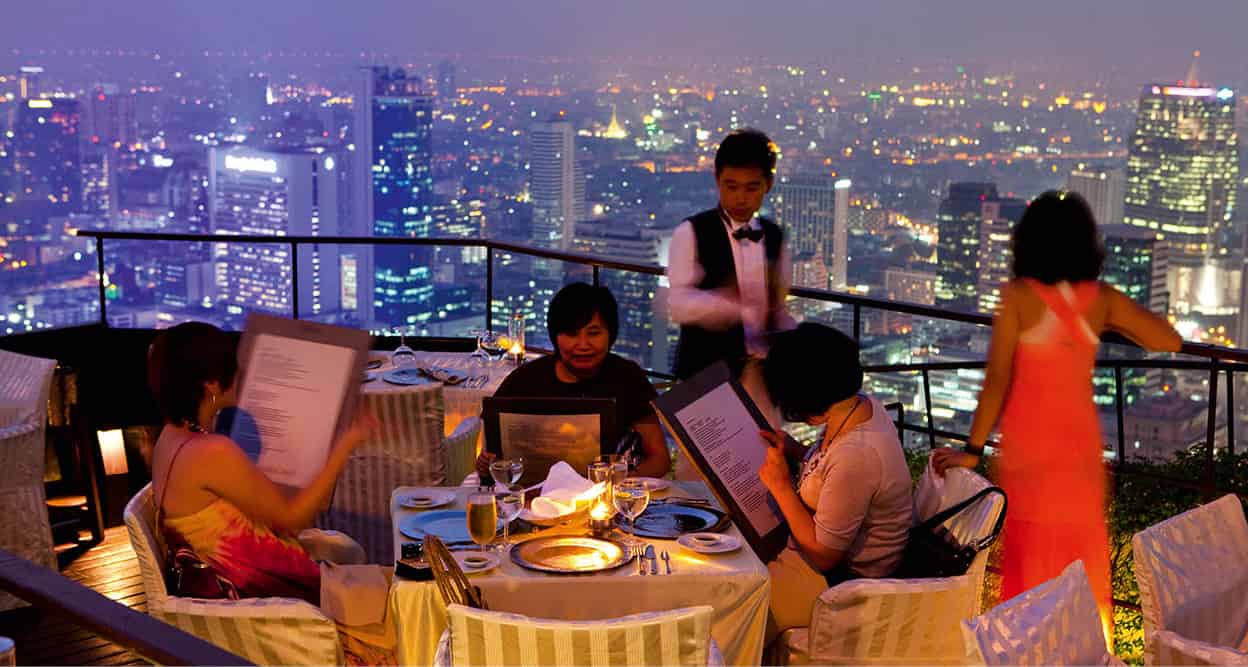
Vertigo Restaurant at the Banyan Tree Hotel.
Peter Stuckings/Apa Publications